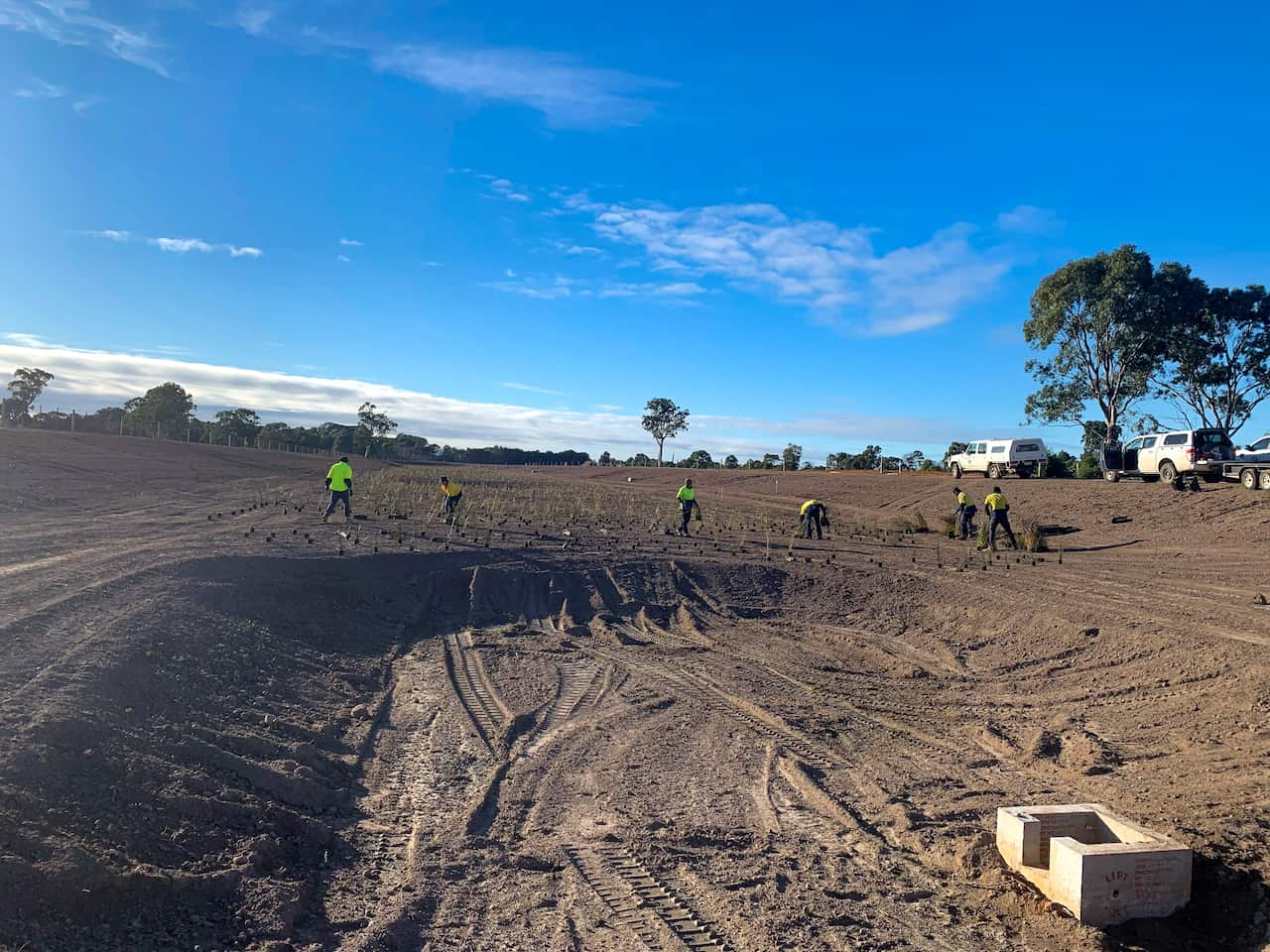For the past few months and despite strict coronavirus restrictions, Nigel Pearce – a Gunaikurnai, Mutti Mutti, and Yorta Yorta man – has been part of a team revitalising his Country.
Jones Bay is a significant part of the Gippsland Lakes system which hosts food sources for native animals from across the region, but its health has been compromised by invasive species and polluted water.
Mr Pearce is the crew manager at the Gunaikurnai Land and Waters Aboriginal Corporation (GLaWAC), and says they’ve built two wetlands which act as filters for the Lakes.
“So the idea is for the wetlands to create a filtration sort of area so all the water, the polluted water will get filtered,” he said.
“We’ll get two lots of filtration and then work its way up to the Gippsland Lakes and that means good water, good quality fish, good quality everything that lives in the water.” The project saw Traditional Owners plant 80, 000 native seedlings over three months, under strict coronavirus restrictions and in partnership with Cranes Asphalting and the local East Gippsland Shire Council.
The project saw Traditional Owners plant 80, 000 native seedlings over three months, under strict coronavirus restrictions and in partnership with Cranes Asphalting and the local East Gippsland Shire Council.

Digging out the wetlands took four months Source: Supplied
“I think just to dig the actual wetland itself took four months for the construction side of it, and then three months to sort of plant it out,” he said.
He says they’ve already noticed animals returning to the region.
“When we were first rocking up on site there was one wood duck hanging around. Towards the end of the job there was 20 to 30 wood ducks,” he said.
"I think we also had a couple of black swans in there as well.” The project comes in the wake of last summer's devastating bushfires, which pushed invasive species like foxes into unburnt environments around the wetlands and claimed Mr Pearce's family home.
The project comes in the wake of last summer's devastating bushfires, which pushed invasive species like foxes into unburnt environments around the wetlands and claimed Mr Pearce's family home.

Contructed wetlands on Gunaikurnai country Source: Supplied
“It was definitely heartbreaking that first time going out to Sarsfield and seeing everything charcoal black. It really hits home and takes you to a different place," he said.
But Mr Pearce says the rain from the past few months combined with the newly constructed wetlands should see the area rejuvenated.
“Picking up from our ancestors back in the day, they would’ve burnt these areas and what not to sort of maintain them. And now we’re making [wetlands] to get them back up to scratch," he said.
"I can’t find the words to explain it, but it’s a good feeling."


